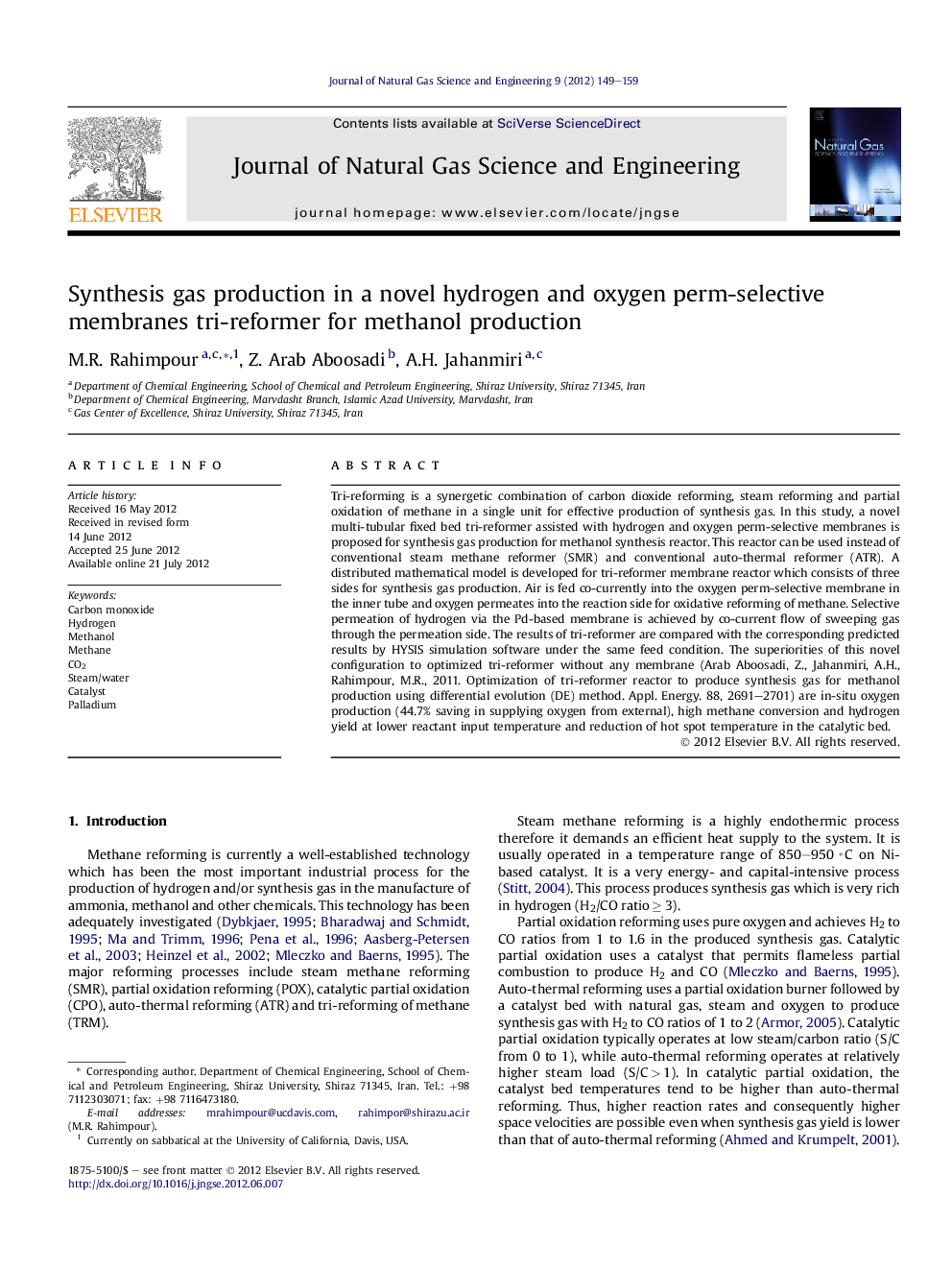| Article ID | Journal | Published Year | Pages | File Type |
|---|---|---|---|---|
| 1758149 | Journal of Natural Gas Science and Engineering | 2012 | 11 Pages |
Tri-reforming is a synergetic combination of carbon dioxide reforming, steam reforming and partial oxidation of methane in a single unit for effective production of synthesis gas. In this study, a novel multi-tubular fixed bed tri-reformer assisted with hydrogen and oxygen perm-selective membranes is proposed for synthesis gas production for methanol synthesis reactor. This reactor can be used instead of conventional steam methane reformer (SMR) and conventional auto-thermal reformer (ATR). A distributed mathematical model is developed for tri-reformer membrane reactor which consists of three sides for synthesis gas production. Air is fed co-currently into the oxygen perm-selective membrane in the inner tube and oxygen permeates into the reaction side for oxidative reforming of methane. Selective permeation of hydrogen via the Pd-based membrane is achieved by co-current flow of sweeping gas through the permeation side. The results of tri-reformer are compared with the corresponding predicted results by HYSIS simulation software under the same feed condition. The superiorities of this novel configuration to optimized tri-reformer without any membrane (Arab Aboosadi, Z., Jahanmiri, A.H., Rahimpour, M.R., 2011. Optimization of tri-reformer reactor to produce synthesis gas for methanol production using differential evolution (DE) method. Appl. Energy. 88, 2691–2701) are in-situ oxygen production (44.7% saving in supplying oxygen from external), high methane conversion and hydrogen yield at lower reactant input temperature and reduction of hot spot temperature in the catalytic bed.
Graphical abstractSchematic diagram of proposed novel membrane multi-tubular fixed bed tri-reformer reactor.Figure optionsDownload full-size imageDownload high-quality image (104 K)Download as PowerPoint slideHighlights► A total of 44.7% saving in supplying oxygen from external via in-situ oxygen production. ► Significant cost saving for oxygen separation plant. ► High methane conversion and hydrogen yield at lower reactant input temperature. ► Reduction of hot spot temperature at the catalyst bed.
